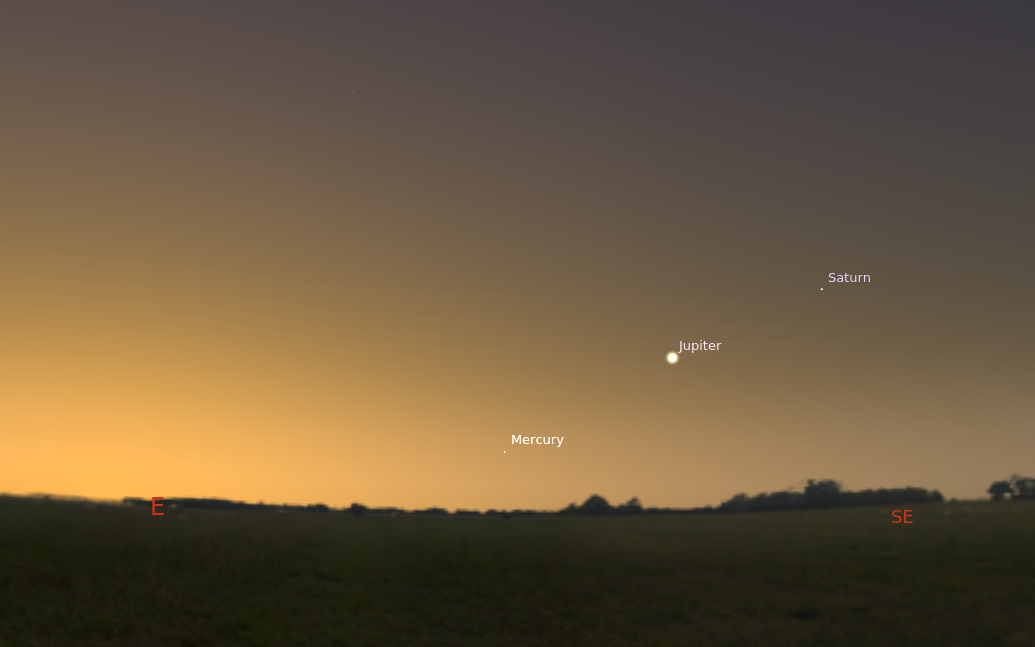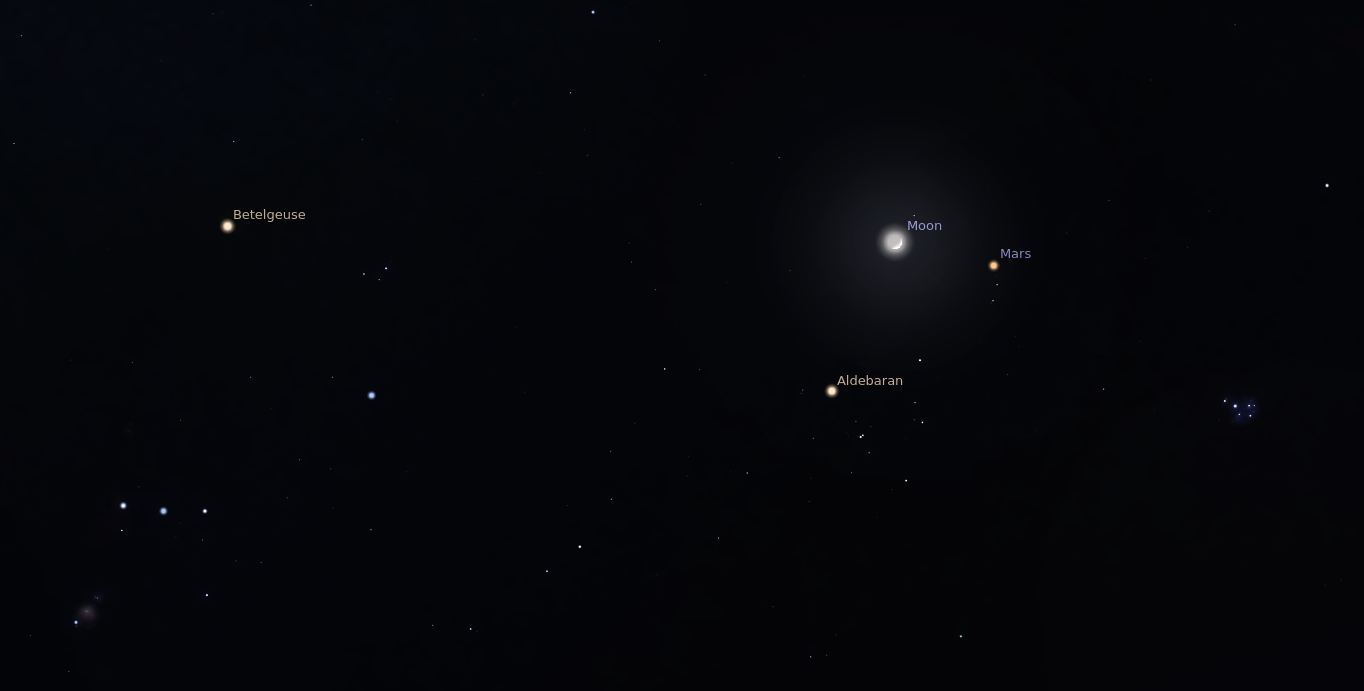March Update
March 14, 2021
Hello, everyone!
We are entering one of my two favorite times of year here in the Midwest. The robins are arriving, the ponds have melted and are filling with migrating waterfowl, and it shouldn't be too long before the daffodils and bluebells kick off the flower season. Spring is here.
Or at least that's what I thought. Now the forecast is calling for another foot of snow.
In the sky, it will still be awhile before we have any major events, but Jupiter and Saturn are becoming visible again in the morning skies, and we have a handful of other notable minor events in the coming weeks.
You may recall that Jupiter and Saturn had their “Great Conjunction” low over the sunsets last December, and then proceeded to disappear into the sunset. They have both now passed the sun and are appearing high enough over the sunrises that they are becoming relatively easy to find. (It is almost as if Jupiter and Saturn are waking up from a winter hibernation, and are now rising in the mornings to decorate the springtime sunrises for the benefit of a world coming back to life.) For the next couple of weeks, Mercury will add itself to the scene to make a trio of sunrise planets...although Mercury is closer to the horizon, and harder to find than the other two. In any case, this will be another good opportunity to visualize the solar system in the sky—Find the planets, imagine the sun below the horizon, and then imagine the common line passing through them all. The following picture shows the view from Iowa on the morning of March the 17th, about a half-hour before sunrise. The view should be pretty similar for anyone living in the Northern Hemisphere, any day this week.

Venus is still lost in the glare of the sun, and will be until May. Mars continues to be visible in the evenings, although it has drastically faded since last October's opposition. Then again, you may want to pay special attention to it on the evening of Friday the 19th. Mars is currently passing through the “Golden Gate” of the ecliptic, i.e. it is passing between the Hyades and the Pleiades. On the evening of the 19th, a crescent moon will overtake Mars, and pass alongside it as it progresses through the “Gate”. (The Hyades is a cluster of reddish stars forming the classic “V” of Taurus, and the Pleiades is a smaller grouping of bluish stars to the west of the Hyades, and underneath Perseus.) If you are familiar with the “Winter Hexagon”, you should have no trouble finding the scene. In any case, you should be able to just go outdoors after dark on Friday, look for the moon high in the southwest, and then hunt for Mars, the Hyades, and the Pleiades. They should be arranged something like this:

I'll finish this brief newsletter with a quick list of some other minor items of potential interest.
Tomorrow, Monday the 15th, will be the peak of the Gamma Normid Meteor Shower. However, since this shower has meteor rates of around 5 per hour (barely above the background rate of everyday “sporadic” meteors), and since they occur mostly in the skies in the southern hemisphere, they are hardly worth mentioning.
This Saturday, the 20th, will mark the Vernal Equinox. On that day, the sun will rise due east, set due west, and give us 12 hours of daylight and 12 hours of darkness.
This month's full moon will occur in two weeks, on Sunday the 28th, and will mark the beginning of a Supermoon Series. This means it will appear slightly larger than usual for a few months, although not so much that you would notice without measurement. The moon approaches and recedes a little as it passes through its cycle, and for the next four months or so, the full phase will coincide roughly with the perigee or “close point” of its orbit, thus resulting in “supermoons”. (I sometimes wonder why the press gets all excited about the “supermoons”, but totally ignores the opposite case — the “mini-moons”. Then again, I guess I'm pointing out the supermoons, having never before mentioned the minimoons...) Not only are we entering a “supermoon series”, but two moons from now, during the May full moon, it will be eclipsed. On May the 26th, we will be treated to a supermoon eclipse. (I'll provide more information about this upcoming lunar eclipse as the time approaches.)
I'll also take this opportunity to provide a couple of quick reminders: You can always read past issues of this newsletter on my archive page. (Scroll to the bottom of the page to find the archives.) Also, I am always open to feedback, suggestions, and topic requests.
Happy Stargazing!John